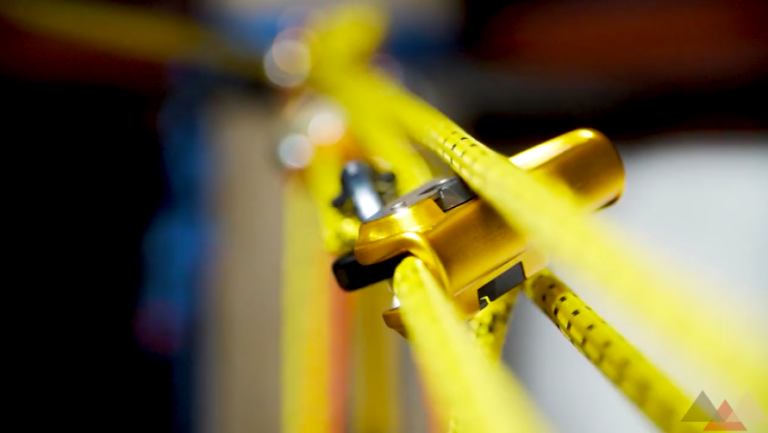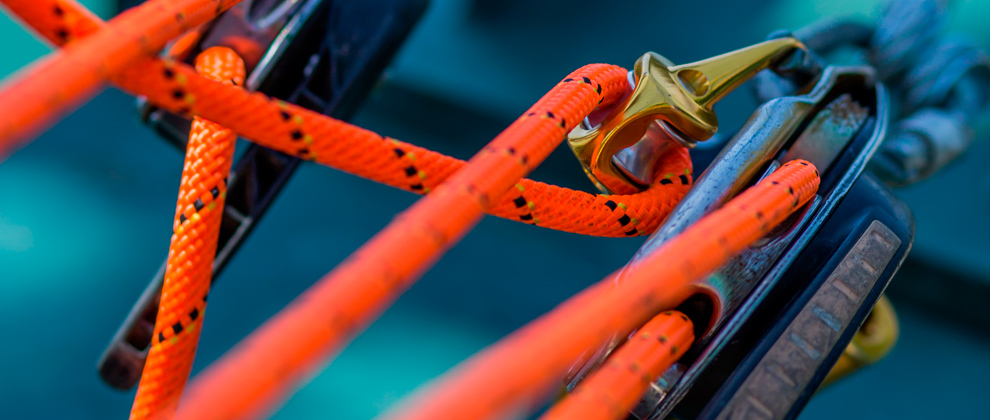The history of rope dates back to at least 17,000 BC. Early ropes were short and hand-twisted or braided. The expansion of shipping and the increase in ship size drove the need for longer ropes. Ropes were traditionally made in a “rope walk” – a long alley with spinning wheels at the upper end and a wheel and capstan at the lower end.
As mentioned, nylon ropes came about in the 1950s and 1960s. This was a huge development, as prior to nylon most ropes were made from natural fibers like hemp or manila. These ropes were mostly used to haul up seconds, and the thought of taking an actual leader fall was absolutely horrifying. Nylon allowed for the construction of lighter weight ropes with great impact absorption and the ability to hold upwards of 5,000 pounds. This was a game-changer for climbers, as it made climbing much safer and more accessible.
For technical rope rescue, kernmantle rope is the gold standard for modern rope construction. It combines an inner, braided core with an outer sheath, making it stronger and more durable than other types of rope. rescue rope is often used in firefighting and other rescue operations because it can withstand high temperatures and severe conditions.
Rope rescue typically uses static rope, as the possibility of free-hanging ascent, litter rescue, or descent demands it. Dynamic rope, however, is used in rock climbing as it has a cushioning effect which protects against falls. While dynamic rope performs poorly when rigged over multiple edges, it is ideal for free-hanging climbers as it provides rebound.
Static rope is typically used in technical rope rescue operations, where the rope needs to be able to support a static load. Dynamic rope, on the other hand, is more commonly used in mountaineering applications where the rope needs to be able to stretch and absorb impact.
When it comes to rope selection for technical rescue operations, static rope is usually the go-to choice. However, there are instances where dynamic rope may be a better option.
For example, if you’re climbing up a structure (like a cliff face or training tower) and there’s a strong possibility of falling, dynamic rope is a better option. That’s because static rope doesn’t stretch, which means it won’t absorb the energy from a fall as well. This can help to protect you from serious injury.
Dynamic rope is also superior to static rope when top-roping or lead climbing a structure. Top-roping is when you climb a rope that’s already attached to an anchor at the top of the structure. Lead climbing is more dangerous because you’re bringing the rope up with you as you go. But since dynamic rope stretches, it’s better able to absorb the energy from a fall in these situations.
Rope Fibers
Rescue rope is typically made from nylon, polyester, polypropylene, or polyethylene fibers. Kernmantle rope is a type of rescue rope that is commonly used in rescue operations. This type of rope has a core (the kern) and a sheath (the mantle). The core provides strength and the sheath protects the core from abrasion.
- Nylon fibers are often used in rescue rope due to their high strength and resistance to abrasion. They can also absorb shock loads, making them ideal for use in rescue situations. However, nylon fibers will absorb water, which can lead to a loss of strength and an increase in weight. Additionally, exposure to acids can damage nylon fibers. rescue rope needs to be strong and durable, which is why nylon fibers are often used. However, it is important to keep in mind that nylon fibers can be damaged by water and acids, so rescue rope made from nylon fibers should be used with care.
- Rescue ropes made from polyester fibers offer the strength and abrasion resistance of nylon, but with low stretch for reduced shock loading. Water absorption is minimal, so performance in wet conditions is virtually unaffected. Polyester also has a high resistance to ultraviolet degradation from sunlight. Polyester rescue ropes are slightly heavier than nylon and have less friction.
- Rope made of polypropylene or polyethylene fibers is often used for water rescue purposes because it can float. However, these ropes are not as strong or durable as other types of rope, so manufacturers warn against using them for rappelling, hauling heavy loads, or in rescue systems. Polypropylene and polyethylene fibers have good resistance to most chemicals and only low resistance to deterioration when exposed to sunlight.
- Aramid ropes, such as those made from Kevlar®, Technora® and Twaron®, are some of the strongest and most heat-resistant ropes available. However, they have very low elongation characteristics, which can make them difficult to use in certain situations.Kevlar fibers ropes were found not to survive well in situations that require repeated bending, so Technora and Twaron have become the preferred fibers for life safety ropes.The unique feature of aramid fiber is its resistance to flame and melting. It decomposes at approximately 500°C, making it an ideal choice for fire resistant escape lines. Technora® is the go to fiber for fire escape lines and life safety rope emergency evacuation where heat and fire is eminent.
- High Modulus Polyethylene (HMPE) fibers like Spectra® and Dyneema® offer high strength and lightweight. However, due to their low thermal properties, ropes made from these fibers are not recommended for rappelling or other rope-based systems. These fibers are often added to river rescue throw lines, as they provide added strength in small-diameter ropes while still maintaining floatation, an important characteristic in this context.
- LCAP fibers, or Liquid Crystal Aromatic Polyester fibers, are a type of synthetic fiber that is known for its stiffness and strength. LCAP fibers are often used in high-performance applications, such as aerospace and automotive engineering. Vectran® is the most common trade name for LCAP fibers.LCAP fibers are made from long-chain polymers that are arranged in a liquid crystalline structure. This structure gives LCAP fibers their unique properties, including high tensile strength and modulus, low density, and good resistance to heat, chemicals, and UV light.LCAP fibers are often used as reinforcement in composite materials. They can also be used in yarns and fabrics, as well as in ropes and cables. LCAP fibers are generally more expensive than other types of synthetic fibers, such as polyester or nylon.
Peace on your Days
Lance










